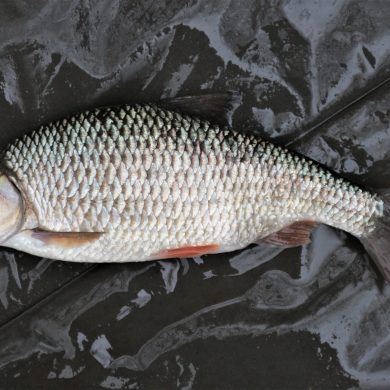Members of the North Atlantic Salmon Fund (NASF) and its North American partner, the Atlantic Salmon Federation (ASF), are disgusted with the North Atlantic Salmon Conservation Organisation (NASCO) for failing to stop the resumption and escalation of commercial salmon fishing in the waters off Greenland.
NASCO was set up by international treaty 30 years ago to rescue collapsing Atlantic salmon stocks. The fish, born in rivers, spend two or more years in freshwater and then go to sea to travel vast distances for one or more years before returning as adults to the rivers of their birth to spawn. Their future was threatened when a huge commercial fishery by vessels of several nations sprang up after the discovery of the location of the areas off Greenland and the Faroe Islands in which the salmon do most of their feeding and growing.
For three decades the national delegates to NASCO have laboriously talked and argued amongst themselves. But they have failed to bring Atlantic salmon numbers back to the abundance that existed so long as the locations of the feeding areas remained a mystery.
Most of what progress has been achieved has come from the efforts of the two private sector conservation bodies, NASF and the ASF. They have raised large sums to compensate many of the former salmon fishermen who volunteer to stop catching salmon. But NASCO has allowed some of its member nations, notably Canada, Norway, Scotland and Ireland, to ignore the International Council for the Exploration of the Seas (ICES), the distinguished scientists who advise NASCO on how the restoration of salmon numbers can be achieved. They all flout the ICES advice that any commercial fishing of Atlantic salmon should be restricted to netting sustainable number of fish in the estuaries of rivers with plentiful stocks. Now NASCO itself has ignored the ICES advice there should be no commercial harvesting in the feeding areas off Greenland and failed to stop factory sales of wild salmon in Greenland or limit that country’s subsistence fishery.
For their part, the Greenlanders say they are fed up with protecting salmon with the aim of restoring stocks while other nations allow the fish that are saved to be killed commercially as they return to their home rivers.
Orri Vigfússon, chairman of NASF, said that he could understand the Greenlanders’ reaction to NASCO’s continued discrimination. “Every nation should have the same rights and the same responsibilities,” he declared. “The international governance of wild salmon will not work unless you treat all the people equally. For 30 years NASCO has failed. They have tried to have one set of restrictions for host nations and another set of rules for rich nations like Norway, Scotland, Ireland and Canada; one set of science for Greenland and the Faroes but another set of science for rich nations. Of course this has never worked and will never work“, said Orri Vigfússon, Chairman of the North Atlantic Salmon Fund (NASF).
“Greenland will now resume commercial fisheries. The Faroes fishermen will continue to work with the North Atlantic Salmon Fund to help restore salmon stocks. But they also resent the fact that Norway, Scotland and Ireland allow commercial net fisheries to kill 98 of every 100 salmon the Faroese have spared, The Norwegian government also permits krokgarn nets in Northern Norway that principally take Russian fish and are so deadly that they are banned in most other countries and in other parts of Norway. “The developments in Greenland should greatly concern the US State Department because it has failed to take a leadership role over the last decade” Mr Vigfússon added. “Most wild Atlantic salmon native to US rivers are on the verge of extinction and they feed off the west coast of Greenland. Has the US Government given up its Atlantic salmon? “
Bill Taylor, President of the ASF, said, “I have feared the day that Greenland would resent having to limit its harvest while year after year other parties to the NASCO treaty overharvest salmon and continue to permit their own mixed-stock fisheries. NASCO’s inability to control the Greenland fishery is especially disastrous for US salmon, where stocks are at their lowest levels in history and protected under the Endangered Species Act.”
NASF and ASF have previously agreed private-sector deals with Greenland’s fishermen in 1993, 1994 and from 2002 to 2009 that allowed only a few salmon to be caught. During that period ASF and NASF invested in alternative economic development opportunities in return for the fishermen suspending their right to fish salmon commercially. The Agreement allowed Greenlanders a modest subsistence salmon fishery.
“What is needed is a new international treaty,” said Mr Vigfússon. “If salmon are ever going to be restored in countries like the US, France, Spain, Germany, Ireland, Scandinavia, Russia and the U.K. these countries need to act now and act fast. Until that happens conservation organizations like NASF and ASF and others believe that a private-sector deal may be the last chance for wild salmon on both sides of the Atlantic.”
The North Atlantic Salmon Fund, (NASF), is a coalition of voluntary conservation groups that have come together to restore stocks of wild Atlantic salmon to their historic abundance. –– See more at www.nasfworldwide.com
Please contact Orri Vigfússon +354 893 3553 or nasf@vortex.is

